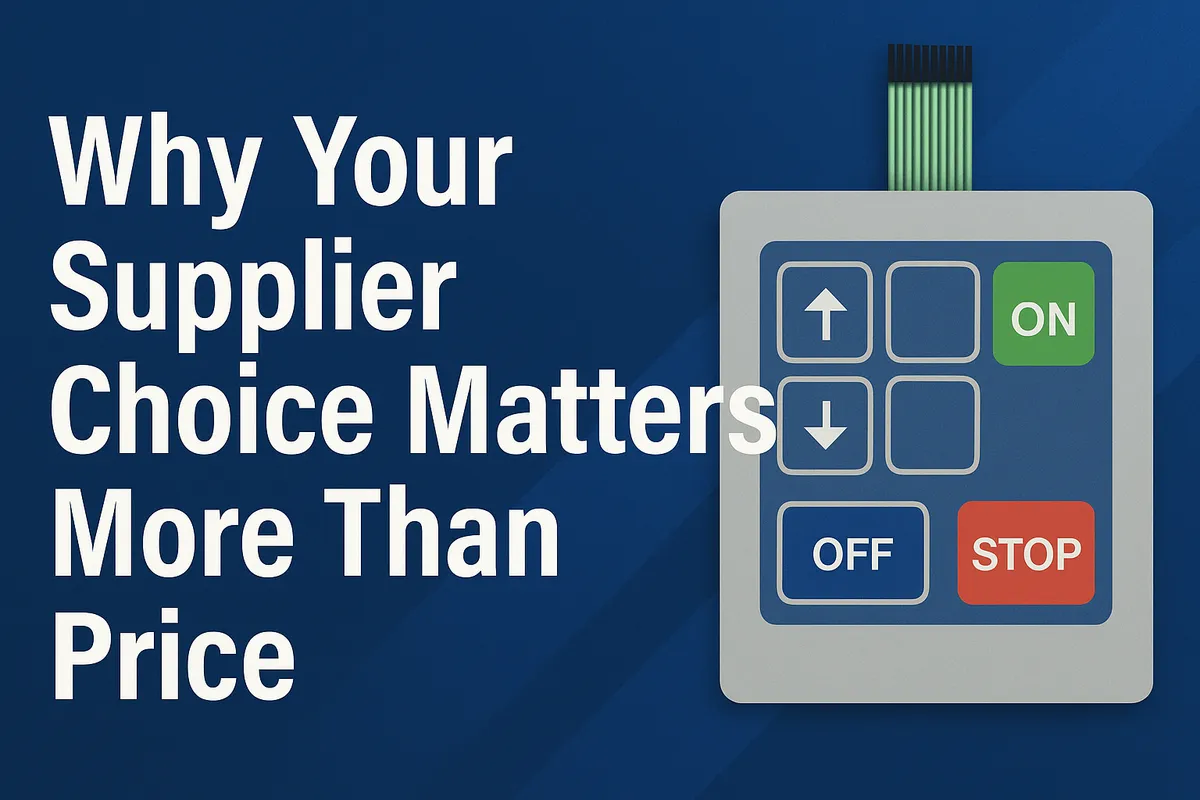How to Choose the Right Membrane Switch Supplier: An OEM's Guide
For an Original Equipment Manufacturer (OEM), the components you source define your product's reliability and your brand's reputation. A membrane switch or Human-Machine Interface (HMI) panel is the primary point of interaction for your user; it must be durable, reliable, and intuitive.

Why Your Supplier Choice Matters More Than Price
For an Original Equipment Manufacturer (OEM), the components you source define your product’s reliability and your brand’s reputation. A membrane switch or Human-Machine Interface (HMI) panel is the primary point of interaction for your user; it must be durable, reliable, and intuitive. Choosing a supplier based solely on the lowest unit cost often leads to higher total costs due to field failures, assembly delays, and inconsistent quality. A strategic partnership with the right supplier ensures supply chain stability, consistent quality, and access to engineering expertise that can enhance your final product and reduce long-term expenses.
The Core Evaluation Checklist for Membrane Switch Suppliers
When vetting a potential long-term partner for custom membrane keypads, procurement managers should look beyond the quote and evaluate a supplier’s holistic capabilities. Use this checklist to score potential vendors.
| Evaluation Area | Key Criteria to Verify |
|---|---|
| 1. Engineering & Design | Do they offer in-house design support and rapid prototyping? Can they advise on material selection, backlighting, and tactile feedback options? |
| 2. Quality & Manufacturing | What quality control systems are in place? Can they demonstrate batch-to-batch consistency, circuit testing, and lifecycle testing? |
| 3. Material Science | Do they have a stable supply chain for critical materials like polyester, polycarbonates, and industrial adhesives (e.g., 3M)? |
| 4. Export & Compliance | Do they have proven experience exporting to your region? Can they provide documentation for international standards (CE, RoHS, REACH)? |
| 5. Partnership & Support | Are they responsive and collaborative? Do they have a track record of long-term OEM partnerships and provide post-sale support? |
Engineering & Design Capabilities
A strong supplier acts as an extension of your R&D team. They should be able to take your initial concept or technical drawing and provide Design for Manufacturability (DFM) feedback. This includes optimizing the layer stack-up, suggesting the right dome type for the desired tactile feel, and integrating features like EMI/RFI shielding or backlighting in the most efficient way. Ask potential suppliers for examples of how they have solved complex design challenges for other clients.
Manufacturing & Quality Control
Consistency is critical. A supplier’s quality management system (QMS) is your best guarantee against defects. Ask for a virtual or physical tour of their production line. Look for evidence of automated testing, color calibration, and cleanroom assembly environments. A supplier with decades of experience, like G&D Elektronik’s 30-year history, has likely refined these processes to a high degree, ensuring that the 10,000th part is identical to the first.
Export Experience & Compliance
For European OEMs, sourcing from a partner outside the EU requires careful vetting of their export capabilities. A reliable supplier will have a dedicated logistics team and a deep understanding of customs documentation, tariffs, and your region’s compliance requirements (e.g., RoHS 3, REACH). A lack of experience here can lead to costly shipping delays and legal headaches.
Red Flags to Watch For
- Inability to provide samples or prototypes quickly.
- Vague answers about their quality control processes.
- No references from long-term clients in your industry.
- Heavy reliance on outsourcing for core processes like printing or assembly.
- Lack of international compliance documentation.
Frequently Asked Questions (FAQ)
What is a typical lead time for custom membrane switch prototypes? While this varies, a well-equipped supplier can typically produce prototypes within 2-4 weeks after design approval. Series production lead times are generally 4-6 weeks.
What information do I need to provide to get an accurate quote? Provide a technical drawing or CAD file if possible. Otherwise, include dimensions, number of keys, required IP rating, desired materials, connector type, and estimated annual volume.
